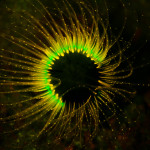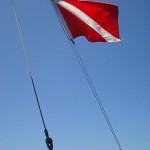If you scuba dive, you may already have heard of Nitrox. To breath underwater, most divers use a normal atmospheric air mixture (21% oxygen, 78% nitrogen, 1% trace gases) under pressure. One the issues every diver faces is decompression sickness. Decompression sickness happens when the dissolved gases in your blood come out of solution forming gas bubbles. Normally this would occur in the lungs, but if this occurs too fast they may not be able to compensate. Typically the culprit gas is nitrogen but oxygen can also prove toxic. Decompression sickness is a very painful thing leading to joint pain, whole body itching, swelling of the skin, amnesia, confusion, seizures, paralysis, unconsciousness, shortness of breath, fatigue, and potentially death. As you can imagine, we go to great lengths to avoid this. The easiest thing we do is avoid ascending too quickly and taking safety stops at 15 feet allowing for sufficient outgassing. Recreational divers also avoid diving deep and long dives to prevent decompression stops and too much build of gases in our body. We also allow sufficient time between dives, i.e. the surface interval, so that gases can naturally outgas. Above is the fail safe dive table that we use to calculate all these times. Although with the advent of modern computers much of this can be calculated automatically. But as a computer is fallible equipment, we always rely on the table.
One of the ways we can reduce this is to breathe mixtures other than typical air, i.e. reduce the amount of nitrogen. A Nitrox mixture in scuba diving refers to any gas mixture where oxygen is increased and nitrogen reduced. This is thought to reduce the risk of decompression sickness when comparing to the same dive for regular air or alternatively allowing for extended dive times without needing decompression stops for the same risk.
But is Nitrox the Godsend we all think? On the scubadiving boards the abstract of new study is floating around. Now it should be cautioned that this study was published as an abstract and presented at a conference. Thus the data and conclusions have not be peer reviewed by other scientists in a journal. With no paper available to evaluate the methods it is difficult to assess the validity of the conclusions, methods, and analyses.

A new small study indicates that repeated diving with Nitrox mix gases may harm the endothelium, i.e. the interior surface of the blood vessels. The researchers evaluated endothelium function by seeing if the vessels dilated after a temporary blocking of the artery (flow mediated dilation), think blood pressure cuff. This blocking results in a subsequent temporary increase in blood flow. Using an ultrasound, doctors can determine if the blood vessels expand accordingly. In 10 divers, endothelium function was below normal. In this same set of divers, “Endothelial repair mechanisms” were also detected, although I have no idea what that means specifically. But the interesting thing is that it may not be just Nitrox.
But in the study, each dive with standard air reduced endothelial function by roughly 2 percentage points from around 5% flow mediated dilation at baseline (P=NS), whereas it dropped roughly 4 percentage points on the initial dive with nitrox and then, without returning to baseline, fell more than 2 percentage points on a subsequent dive two days later (both P<0.05).
So what does this all mean for us divers? Well, I caution that this is preliminary. I have contacted the Divers Alert Network’s, the premier diving safety and health organization, chief medical doctor for a statement. I hope to meet with him soon and provide a followup post.







I do not currently dive with Nitrox but it seems in Australia nirtox diving is quite popular on some of the expedition vessels to the Coral Sea, I am sure mixing gases and changing what we breath has to haev a effect on our bodies but I guess you have to consider the alternative.
“One of the ways we can reduce this is to breathe mixtures other than typical air, i.e. reduce the amount of oxygen.”
Actually, this should say reduce the amount of NITROGEN.
Nitrox has INCREASED amount of oxygen. All the mixtures (nitrox, trimix, etc) decrease the amount of nitrogen by either increasing the oxygen percent or by replacing the nitrogen with an inert gas (like helium).
Oops, Thanks for catching this
I’m not going to get too concerned about this one until there is a lot more to report. So many unknowns from an abstract: sample size, confounding factors, etc. I do look forward to DANs take on this.
Very interesting topic to investigate! And with a personal value, too, my father and his buddy died diving (with rebreathers, and additional nitrox and heliox tanks) several years ago and we were never allowed to know the cause of the accident.
I’m looking forward to more in-depth studies. However I agree with Eric, there is a lot more to report.
If I understand correctly (I’m far from being an expert), the study was conducted on a group of 10 Nitrox divers? I would think they are likely to be more “experienced” than the average recreational diver, which means they tend to dive more often, and at greater depths. Could over-exposure to great pressures be the actual cause of this deficient endothelium function?
Van Craenenbroeck study is not the only one that looked into the endothelial function. Both, oxygen and nitrox (and any other innert gas) may affect the measurements of the blood vessel dilatation in response to protracted artificial occlusion of circulation in the respective arm. This has been seen in some chronic conditions also but even in clinical medicine there is no direct corelation between the changes of the response and the clinical findings. The changes Van Craenenbroeck had found were not clearly reported by reporter in the provided link and it is difficult to say if they were of any practical meaning. The endothelial damage and repair is an ongoing process in the body and can be provoked by a variety of activities. In any case, there were no immediate symptoms in divers and discussion of long-term effects is far-fetched at this point.